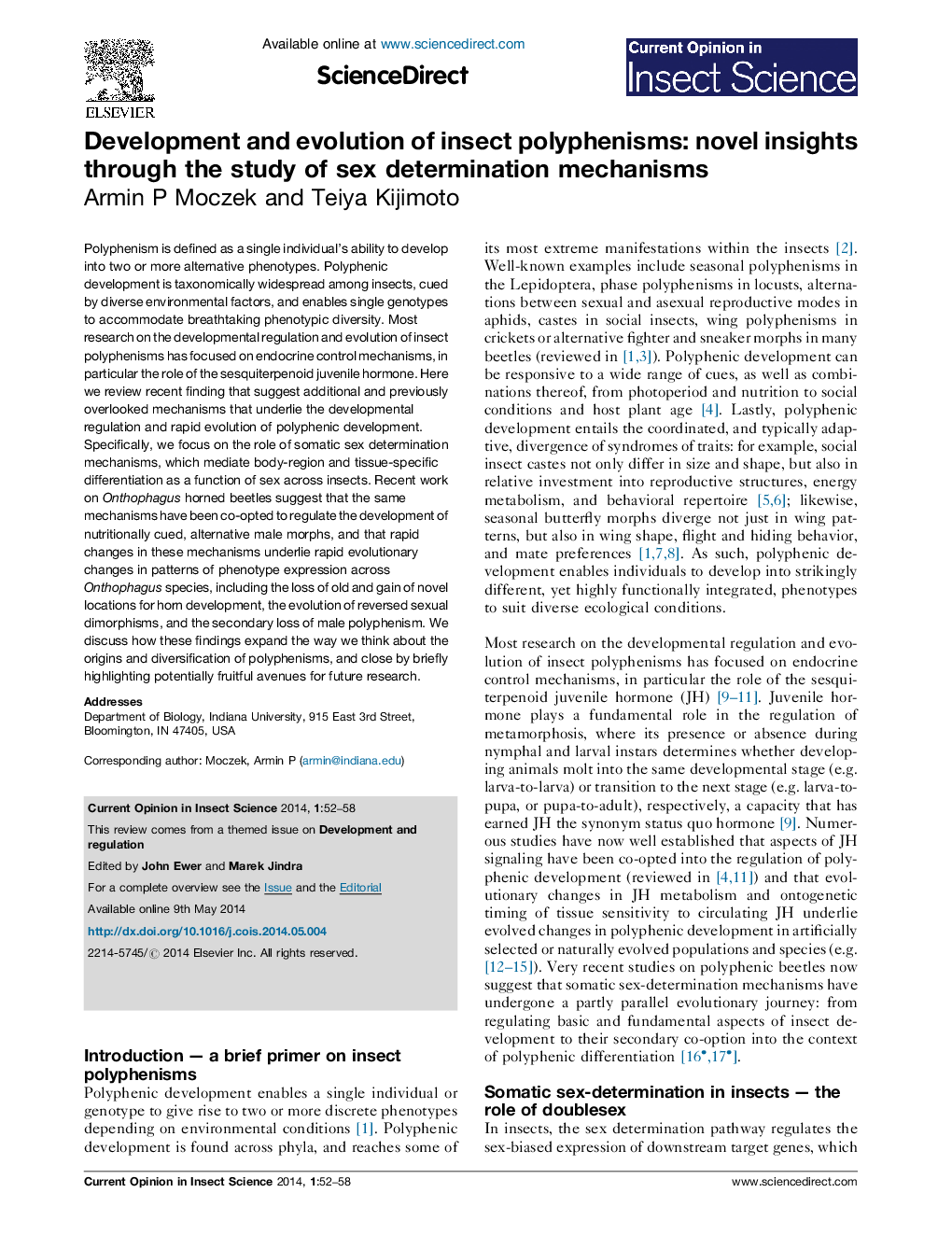| کد مقاله | کد نشریه | سال انتشار | مقاله انگلیسی | نسخه تمام متن |
|---|---|---|---|---|
| 4508260 | 1624389 | 2014 | 7 صفحه PDF | دانلود رایگان |
• Polyphenic development is an extreme yet common form of developmental plasticity.
• Studies aimed at understanding its regulation have emphasized hormonal mechanisms.
• Recent work on divers taxa implicates sex-determination mechanisms.
• Regulation and evolution of polyphenism may be more complex that previously assumed.
Polyphenism is defined as a single individual's ability to develop into two or more alternative phenotypes. Polyphenic development is taxonomically widespread among insects, cued by diverse environmental factors, and enables single genotypes to accommodate breathtaking phenotypic diversity. Most research on the developmental regulation and evolution of insect polyphenisms has focused on endocrine control mechanisms, in particular the role of the sesquiterpenoid juvenile hormone. Here we review recent finding that suggest additional and previously overlooked mechanisms that underlie the developmental regulation and rapid evolution of polyphenic development. Specifically, we focus on the role of somatic sex determination mechanisms, which mediate body-region and tissue-specific differentiation as a function of sex across insects. Recent work on Onthophagus horned beetles suggest that the same mechanisms have been co-opted to regulate the development of nutritionally cued, alternative male morphs, and that rapid changes in these mechanisms underlie rapid evolutionary changes in patterns of phenotype expression across Onthophagus species, including the loss of old and gain of novel locations for horn development, the evolution of reversed sexual dimorphisms, and the secondary loss of male polyphenism. We discuss how these findings expand the way we think about the origins and diversification of polyphenisms, and close by briefly highlighting potentially fruitful avenues for future research.
Journal: Current Opinion in Insect Science - Volume 1, July 2014, Pages 52–58
